NML: In-situ polymerization of cyano groups between MXene layers for high-power sodium-ion capacitors
QQ Academic Group: 1092348845
Detailed
North Konami can provide MXene materials (customizable)
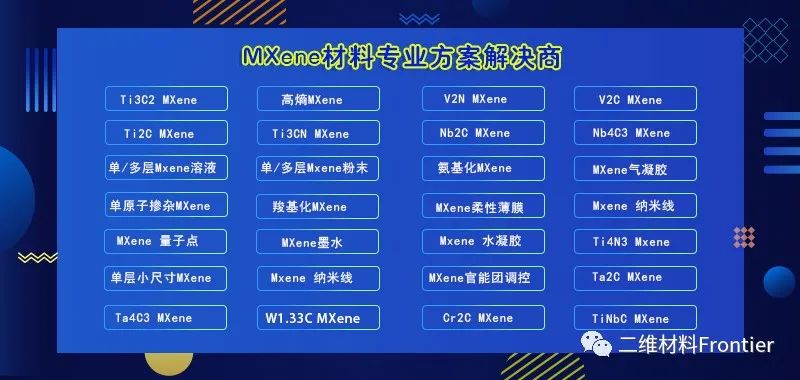
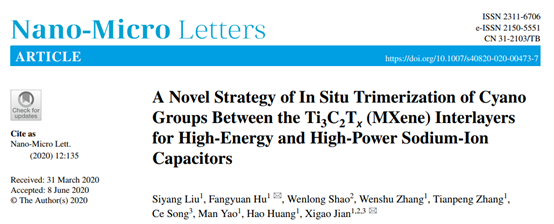

MXenes have broad application prospects in the field of energy storage due to their high electronic conductivity. Due to the similar physicochemical properties of Na-ion and Li-ion, Na-ion energy storage technology is the most promising alternative to Li-ion energy storage devices. However, improving the slow sodium (Na)-ion transport dynamics within MXenes interlayers remains a great challenge.

Recently, Professor Jian Xigao from Dalian University of Technology and others published a title in the well-known academic journal Nano-Micro Letters: A Novel Strategy of In Situ Trimerization of Cyano Groups Between the Ti3C2Tx (MXene) Interlayers for High‑Energy and High‑Power Sodium‑Ion Research paper by Capacitors. A novel nitrogen-doped Ti3C2TxMXene was synthesized by in situ polymerization of sodium dicyandiamide (Na-dca).
Figure 1. Schematic synthesis process, IR and XRD characterization.
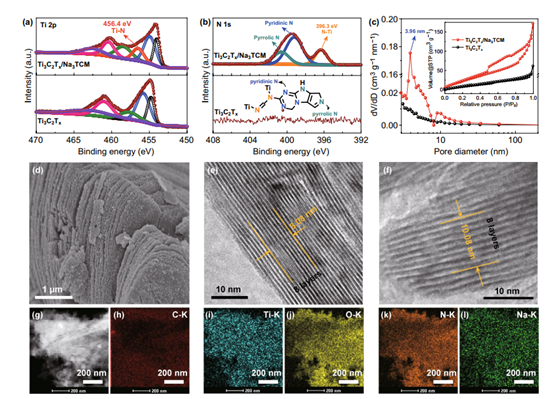
Figure 2. XPS, BET, scan projection and elemental distribution of Ti3C2Tx/Na3TCM and Ti3C2Tx.
Figure 3. Electrochemical performance and kinetic analysis of Ti3C2Tx/Na3TCM and Ti3C2Tx for sodium ion storage.

Figure 4. DFT calculations of Na ion storage on Ti3C2Tx/Na3TCM and Ti3C2Tx surfaces.
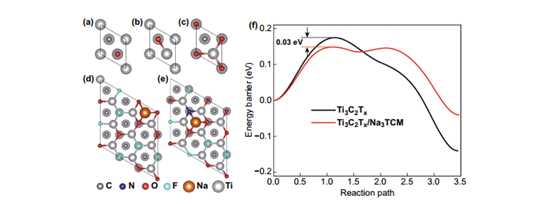
Figure 5. Charge storage mechanism and performance test of Ti3C2Tx/Na3TCM//ACnic.

This paper demonstrates a new and reliable strategy to synthesize highly N-doped 2D Ti3C2Tx nanosheets and exhibit superior Na-ion storage performance. Due to the large interlayer spacing and N-rich surface of Ti3C2Tx/Na3TCM, the designed Ti3C2Tx/Na3TCM has fast and high sodium ion storage capacity, which is verified by the combined results of experiments and DFT calculations.
Literature link:
https://doi.org/10.1007/s40820-020-00473-7



MXenes have broad application prospects in the field of energy storage due to their high electronic conductivity. Due to the similar physicochemical properties of Na-ion and Li-ion, Na-ion energy storage technology is the most promising alternative to Li-ion energy storage devices. However, improving the slow sodium (Na)-ion transport dynamics within MXenes interlayers remains a great challenge.

Recently, Professor Jian Xigao from Dalian University of Technology and others published a title in the well-known academic journal Nano-Micro Letters: A Novel Strategy of In Situ Trimerization of Cyano Groups Between the Ti3C2Tx (MXene) Interlayers for High‑Energy and High‑Power Sodium‑Ion Research paper by Capacitors. A novel nitrogen-doped Ti3C2TxMXene was synthesized by in situ polymerization of sodium dicyandiamide (Na-dca).

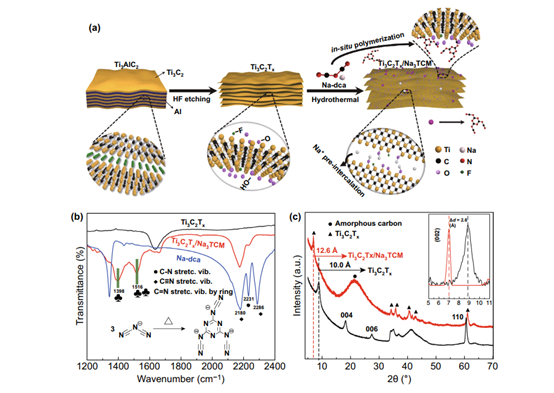
Figure 1. Schematic synthesis process, IR and XRD characterization.

Figure 2. XPS, BET, scan projection and elemental distribution of Ti3C2Tx/Na3TCM and Ti3C2Tx.
Figure 3. Electrochemical performance and kinetic analysis of Ti3C2Tx/Na3TCM and Ti3C2Tx for sodium ion storage.

Figure 4. DFT calculations of Na ion storage on Ti3C2Tx/Na3TCM and Ti3C2Tx surfaces.

Figure 5. Charge storage mechanism and performance test of Ti3C2Tx/Na3TCM//ACnic.

This paper demonstrates a new and reliable strategy to synthesize highly N-doped 2D Ti3C2Tx nanosheets and exhibit superior Na-ion storage performance. Due to the large interlayer spacing and N-rich surface of Ti3C2Tx/Na3TCM, the designed Ti3C2Tx/Na3TCM has fast and high sodium ion storage capacity, which is verified by the combined results of experiments and DFT calculations.
Literature link:
https://doi.org/10.1007/s40820-020-00473-7
- Previous: CEJ: Two-dimensional s
- Next: MXene breakthrough: Na


 mxene academic
mxene academic